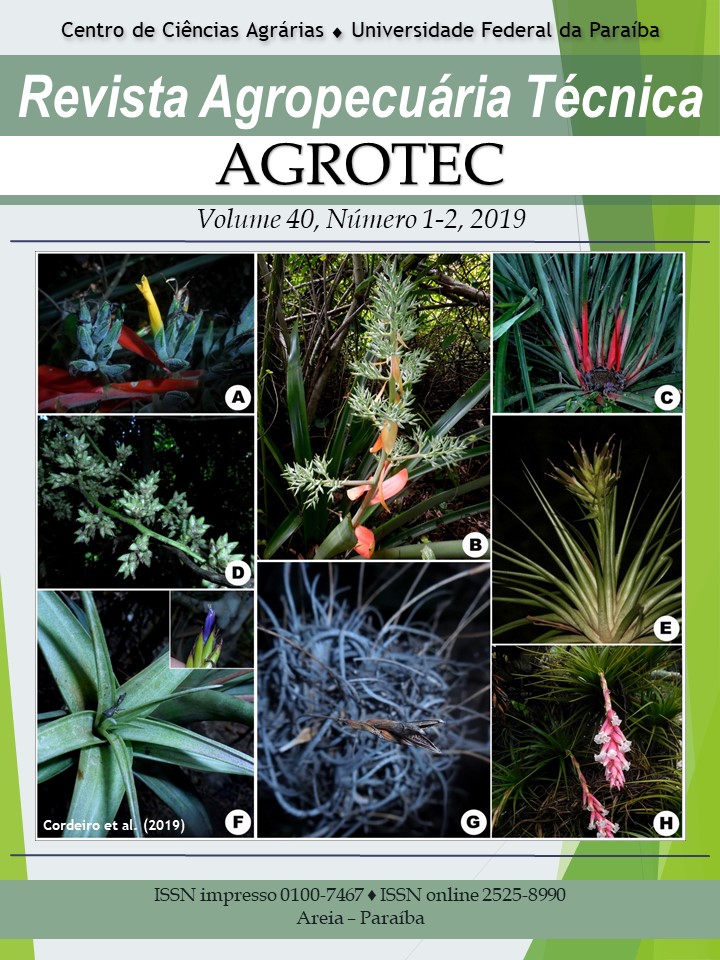Non-legume plant species effects on soil nematodes abundance in a Regosol
DOI:
https://doi.org/10.25066/agrotec.v40i1-2.39488Keywords:
Free-living nematode, Long-term field experiment, Pennisetum glaucum (L.) R. Br., Root-feeding nematode, Sandy soilAbstract
The effects of a non-legume cover crop on total soil nematode abundance and soil groups of nematodes were investigated in a long-term field study. We compared total abundance of soil nematode and the abundance of both free-living soil nematode and root-feeding soil nematode under three different treatments (Pennisetum glaucum (L.) R. Br., native weeds and Caatinga moist-forest enclaves treatments) in a long-term field study cultivated on a Regosol. We found the highest abundance of free-living soil nematode in the Caatinga moist-forest enclaves treatment, whereas the highest abundance of root-feeding nematode was found in the native weeds treatment. We did not find any difference among P. glaucum and native weeds treatments for total abundance of soil nematode. Our findings suggest that the introduction of P. glaucum in sandy soil of Brazilian semiarid can increase the abundance of free-living nematode, but in other hand this cover crop did not reduce the abundance of root-feeding nematode. Our results also highlight the importance of considering the identification of soil nematode groups as indicator of soil quality and impacts of soil management.


